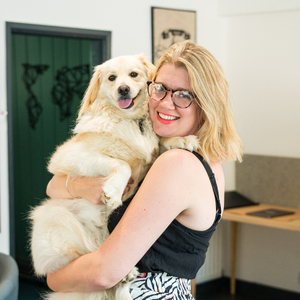Insights
INSIGHTS
All Topics
Four simple ways to do user research
15 Dec 2022by Jenny Lowthrop
We explore why regular user research is important for any product or service development, and look at four different types of user research to try
User research is a way to better understand user needs before, during, and after developing new services, projects, and products. User research is used a lot in agile methodologies and human-centred design.
It is important to acknowledge that user research is not an opportunity to confirm your own beliefs and preconceptions, but a way to discover new learnings and better understand your audience.
Why do we do regular user research?
User research is a way to better understand user behaviour, needs, context, values, and problems. User research can be seen as subjective, but subjective opinions can be collected and read objectively.
We do user research to:
- Put the user front and centre
- To fail fast and learn
- To create things that are easy to use
- To get better return on investment (ROI)
- To build empathy with the user
Doing research little and often can often be more useful than huge amounts of research at the start and end of a project.
It is good to have a range of different user research methods up your sleeve to use at different stages of a project. It is also important to synthesise and analyse results as you go, sharing insights and using learnings to influence the next stages of development.
Four ways to do user research
Here are four ideas for simple user research methods you can use at different stages of developing a product, service, or project.
Card sorting
Card sorting is a method used to help design or evaluate information. In a card sorting session, participants organise topics into categories that make sense to them.
There are three different types of card sorting:
- Open: Participants sort cards into categories that make sense to them, and label each category themselves
- Closed: Participants sort cards into categories you give them
- Hybrid: Participants sort cards into categories you give them, but can also create their own categories
Card sorting is a great way to discover how people understand and categorise information and can also help your users’ expectations and understanding of your topic. It is often used for things like sitemaps for websites or categorising services.
User interviews
In-depth user interviews are a popular form of user research. Research by Nielson Norman Group showed that “85% of the problems are observed in the first five people” and that ROI drops like a stone after five interviews.
User interviews are often used at the early stages to understand the context in which users act and helps to overcome our own existing patterns of thought and assumptions.
When doing user interviews, you should:
- Start by introducing yourself & explaining the problem you’re trying to solve
- Emphasise that this is not about finding a solution but learning something about their experiences and motives
- Interrupt as little as possible and listen to their story
- Use open questions
- Take note of body language and gestures that may be contradictory to what they’re saying
- Have a script, but be open to adding additional relevant questions where appropriate
Don’t judge or teach your interviewees of your knowledge or point of view – this is about gaining theirs!
Remember that note-taking and listening at the same time is a skill. You don’t need to write everything down. Try and keep the conversation flowing while you take note of key points.
User testing
User testing helps you identify problems you may have not considered. Catching issues early on saves time and ensures you are creating the best possible product.
It’s something that should be done at regular intervals each time new things are added to your product or service and should even continue after it’s been released.
It might be that you sit someone down with your website, app, or service and ask them to do specific actions to see how they manage it. For example, testing a new booking system.
A few things to remember when doing user testing:
- Clearly define the test and what you are trying to learn
- Ask the user to talk out loud as they do things and take note of what they say
- Don’t tell the user how to do something, but clearly explain the task
- Ask follow-up questions
- Don’t judge what they do
User personas
User personas are a great way to describe the goals, motivations, and behaviour of real people. They should be backed up by data and research and could be something you do after a combination of the above three research methods.
It is important to remember that your product or service is not for everyone and focusing on a few key users can help you provide something that is fit for your audience.
This can be quite a fun activity to do with your team and charities. For example, Macmillan Cancer Support have used personas to understand the needs of volunteers and donors who get involved in their coffee mornings.
When developing a persona, you might want to:
- Give them a name, age, and background
- Think about their key positive experiences and pain points relating to your service or product: what do they love? What really annoys them?
- Add in key behaviours or habits
- Think about where they consume information, the papers they read, or podcasts they listen to
- Note down how they use digital. Are they on Facebook every night or do they stick to email?
When you’ve created about three-to-five user personas for your product or service, print them out and stick them up in your office as a reminder when developing new messaging, content, or requirements to check if it is something that will serve your key users.
Jenny Lowthrop
More on this topic
Related Content
Recommended Products
04 Jan 2025by Aidan Paterson
The best bank accounts for charities
03 Jan 2025by Ioan Marc Jones
Climate change facts you need to know in 2025
03 Jan 2025by Ioan Marc Jones
An A-Z glossary of climate change terms and definitions
Our Events
Charity Digital Academy
Our courses aim, in just three hours, to enhance soft skills and hard skills, boost your knowledge of finance and artificial intelligence, and supercharge your digital capabilities. Check out some of the incredible options by clicking here.





















